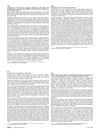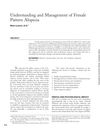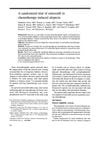TLDR Injectable minoxidil is a promising, effective treatment for hair loss.
This systematic review explores the potential of injectable minoxidil as a treatment for hair loss disorders, highlighting its 100% bioavailability when injected intradermally compared to the lower absorption rates of topical and oral forms. Minoxidil acts as a vasodilator, promoting hair growth by stimulating potassium channels and enhancing cell proliferation. The effectiveness of minoxidil, whether topical or oral, is influenced by the activity of sulfotransferase in hair follicles, which converts minoxidil into its active form, minoxidil sulfate. Injectable minoxidil offers a promising nonsurgical and minimally invasive option for hair loss treatment, with the potential to improve outcomes by extending the anagen phase and increasing follicular size.
 February 2024 in “Cosmoderma”
February 2024 in “Cosmoderma” Low-dose oral minoxidil can help treat male and female pattern hair loss, especially in those who can't use topical treatments or have heart health issues.
October 2022 in “Our Dermatology Online” The Trust tonic is more effective than minoxidil for treating hair loss.
8 citations
,
October 2015 in “PubMed” 5% minoxidil foam effectively treats female hair loss.
 May 2015 in “Journal of The American Academy of Dermatology”
May 2015 in “Journal of The American Academy of Dermatology” 5% minoxidil foam helps women with thinning hair.
 30 citations
,
November 2008 in “Facial Plastic Surgery”
30 citations
,
November 2008 in “Facial Plastic Surgery” The conclusion is that the best approach for treating Female Pattern Hair Loss is a combination of different treatments.
12 citations
,
February 2003 in “PubMed” Androgenetic alopecia can affect adolescents, impacting self-esteem, but minoxidil's effectiveness for them is unclear.
 1 citations
,
September 2002 in “PubMed”
1 citations
,
September 2002 in “PubMed” Minoxidil helps stimulate hair growth and reduce hair loss in women with androgenic alopecia.
 127 citations
,
July 1996 in “Journal of The American Academy of Dermatology”
127 citations
,
July 1996 in “Journal of The American Academy of Dermatology” Minoxidil shortens baldness from chemotherapy by 50.2 days without significant side effects.
36 citations
,
January 1991 in “PubMed” 2% Minoxidil does not prevent hair loss during chemotherapy.





